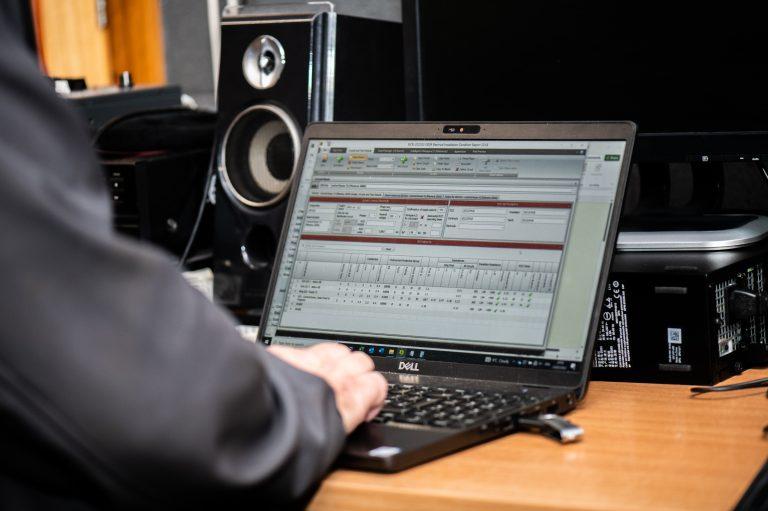From 1st January 2019 the 18th Edition of the BS7671 IET Wiring Regulations became the latest standard in electrical installations. Here we look at the 5 changes most likely to affect existing installations.
All new installations must be designed and built to comply with these latest regulations. In addition, regular fixed wire inspections and testing will assess for compliance with the 18th Edition wiring regulations. But how does this impact on existing installations?
Below, Colin Lang, Operations Manager at Intersafe shares his view on the latest changes within the 18th Edition most likely to affect existing installations.
Do I need to change my existing installations?
“Each new edition of the Wiring Regulations evolves the definition of safety and acceptable practice. Parts of the installation may therefore be considered ‘out of date’. There is no obligation to upgrade the entire installation every time the regulations change, however, there there may be some elements of your installation which are now considered unsafe and these areas would need upgrading.
Here, are the changes Facilities Managers should be most aware of.
411.3.3. RCD Protection for Socket Outlets
“There is now an additional requirement for a 30mA RCD for sockets rated up to and including 32A – this regulation used to only apply to sockets rated up to 20A. The requirement for this level of RCD protection for socket outlets which could be used to supply portable outdoor equipment remains unchanged.
All business types: Check if you have sockets which are now close to windows or doors, for example after building work or reconstruction, and could now feasibly be used to supply portable outdoor equipment outside the equipotential zone. Even if the intention isn’t currently to use portable outdoor equipment from that socket, you should ensure the socket outlet has suitable RCD protection.
Industrial plants: If you are an industrial business you will almost certainly have socket-outlets which now require a higher level of RCD protection. If RCD protection is not installed this could be recorded as a C2 fault, depending on the location of the socket, so before your next EICR inspection, we recommend you review your RCD protective devices.
Previously, installation of an RCD could be avoided by labelling a socket to be used only for certain items. In the 18th Edition, this option has been removed, so RCD protection should be installed unless you have a documented risk-assessment demonstrating that it is not appropriate.
411.3.4 RCD Protection for Domestic Lights
“Regulation 411.3.4 specifies that additional protection from a 30mA RCD is now required for all lighting circuits in domestic properties, without exception.
Be aware, that this requirement for RCD protection for lights ONLY applies to domestic properties. Landlords, this applies to your properties so you should take steps to address this, but FMs in commercial, industrial and other business should be aware they are not included within this regulation.
Section 722. Electric Vehicle Charging Points
“There are a number of changes within this section, and regulation 722.411.4.1 has changed to reflect that Electric Vehicle charging points must now have a separate earth electrode installed. A PME (protective multiple earthing) supply can only be used if certain criteria relating to the installation apply.
Any business which has electric vehicle charging points on site should review this section in more detail and identify if any earthing modifications are required.
521.10.202 Wiring Support and Escape Routes
“‘Wiring systems shall be supported such that they will not be liable to premature collapse in the event of a fire’
The previous regulations required cables in escape routes to use metal fixings, in order to prevent premature collapse in the event of a fire, which may hinder escape and / or rescue attempts.
In the 18th Edition wiring regulations, the requirement for metal cable supports has been extended to ALL cables throughout the whole installation or containment, not just in an escape route. This now precludes the use of non-metallic cable mounts, cable ties and trunking as the sole means of fixing cables to the building structure. The type of fixing required is not specified, but it must offer a high level of heat resistance, and therefore plastic and aluminium would not be considered acceptable.
All businesses should take steps to review and, if required, replace cable fixings.
Section 534 Devices for Protection Against Overvoltage
“Chapter 53 has been completely re-written and section 534 focusses on the requirement for SPDs (surge protection devices) to protect against transient over voltages.
There is guidance on selecting the correct level of voltage protection but also a change in emphasis from ‘assess if you need SPD’ to ‘prove that you don’t’.
The 17th Edition included a lengthy risk assessment including AQ criteria to establish if SPDs were required. Under the 18th Edition, the criteria have been simplified and if any one of 4 criteria applies to your business, then a risk assessment is not required but appropriate surge protection must be installed.
Section 433.3 now states:
“Protection against transient over voltages shall be provided where the consequence caused by overvoltage effects:
(a) results in serious injury to, or loss of, human life, or
(b) results in interruption of public services and/or damage to cultural heritage,
(c) results in interruption of commercial or industrial activity, or
(d) affects a large number of collocated individuals”.
In addition, any structure fed via an overhead supply line shall also require an SPD.
These broad criteria will now apply to a very broad range of businesses; any business where an interruption to commercial activity or public services could result from a transient overvoltage must install surge protection.
For businesses who feel none of these criteria apply, a documented risk assessment is required to evidence why an SPD has not been installed.”
Are you ready for your next EICR? Contact Intersafe




